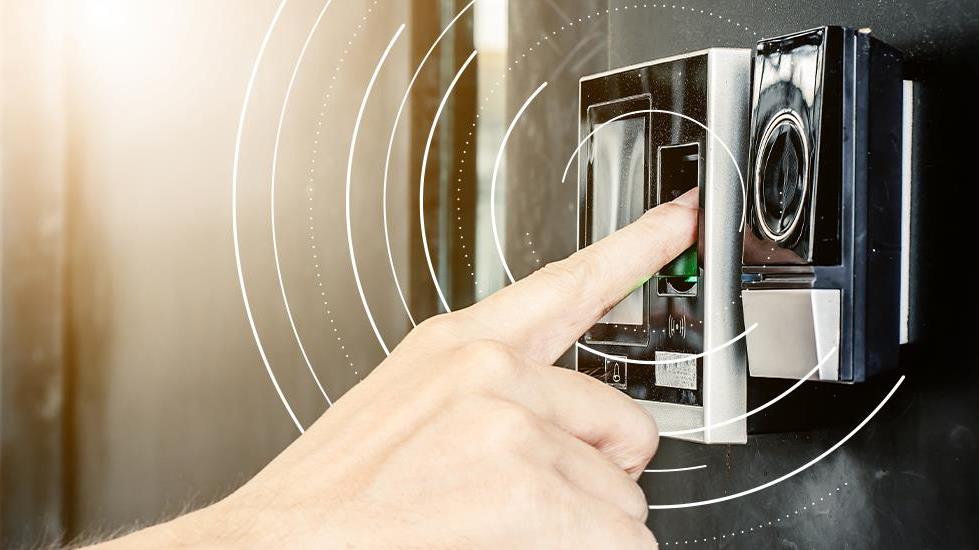
The growing demand for connectivity and digitalization of home, commercial, and industrial security systems gets more sophisticated every year, according to a recent report published by MarketWatch. Simple systems such as a camera connected to a hard drive are a distant memory. Today’s systems include IoT sensors and cameras that can detect motion, send data to the cloud, and can be controlled anywhere in the world.
The next level for security equipment is the integration of biometrics to provide another layer of authentication for access, says MarketWatch.

Initially, the military used biometrics in sensitive areas where protecting the data and people was most important. There is growing adoption of biometrics by banking, retail, and mobile commerce to authenticate transactions in recent years. Industrial manufacturing and operations employ different biometric technologies to improve processes, control access, and prevent accidents. With the advent of smartphones relying on users to unlock their phones using biometrics like your face or fingerprint, adoption has risen significantly.
What are biometrics?
Biometrics identify and authenticate the physical, biological, or behavioral characteristics of a specific person. Biometrics software performs an authentication process by comparing the person’s attributes to the person’s biometric template to determine the resemblance.
Sensors and optics collect and process the data from the biometrics identifiers:
- Physical biometrics identifiers include fingerprints, palm prints or veins, facial, retina, iris recognition, and DNA.
- Behavioral biometrics identifiers include typing rhythm, keystrokes, signature, voice, and eye movement.
Biometrics equipment
Sensors read or measure light, temperature, speed, electrical capacity, pressure, proximity, levels, smoke, gas, and other types of energies. The sensitivity of the sensor is crucial to gather the correct information. For example, a fingerprinting sensor needs to read the person’s fingerprint arches, whorls, loops, and the outlines of edges and furrows of the print to authenticate the person. The biometrics software associated with the sensor will use this information to determine access.
Optics are used to capture facial recognition and eye movement, and they rely on facial recognition software. This software scans 80 nodal points on the face to verify the person’s security authorization. The nodal points are the endpoints used to measure variables on the person’s face. They include the length and width of the nose, cheekbone shape, and eye socket depth. The equipment collects the data, and the biometrics software interprets it to determine authentication for security authorization.
Building the next generation of biometrics equipment
If you are ready to add the hardware to your biometrics software for your industrial applications, you need the right partner to develop the sensors and optics equipment for your safety and security products. We have the innovative engineering and prototyping capabilities to partner with you on your biometrics equipment.
With technology building blocks, including over 40+ sensors ready for prototyping, we can help you design the suitable sensor for the right application. We are experts in the physics and functionality of sensors and can build all sizes of sensors with complex electronics to identify pressure, levels, proximity, and voice data generated.
Our optical engineering team works with you to develop and verify the optical and optomechanical designs and assembly process for your biometric sensors. To ensure the accuracy of the equipment, our optical engineering lab is designed to conduct complex testing and calibrations to meet quality and industry standards. Those standards apply to the imaging quality, motion detection, as well as low light and bright light conditions, all of which are critical to the success of the equipment.
A cleanroom is also available in the lab for microelectronics packaging or the manufacturing of highly sensitive biometrics equipment.
Manufacturing and supply chain support
After your biometrics equipment is designed, we can help you prototype to quickly accelerate the ramping of new products and scaling for mass production. Regional manufacturing sites mean you can build your products in your preferred regions and you can be close to your end-product distribution center.
We can customize the supply chain for each project. Supported by robust internal processes and supplier partnerships, we can ensure that our manufacturing facilities deliver reliable and quality products.
Make the right choice for your biometrics equipment
The biometrics market will continue to grow as a must-have in a comprehensive security system for homes, businesses, and industrial sites. Protecting the people, equipment, and resources within and keeping the wrong elements out requires the security equipment to authenticate the authorized users accurately. Partner with us to design, test, calibrate, and produce your biometrics equipment.
Interested in learning more? Sign up to get the latest news in industrial.



